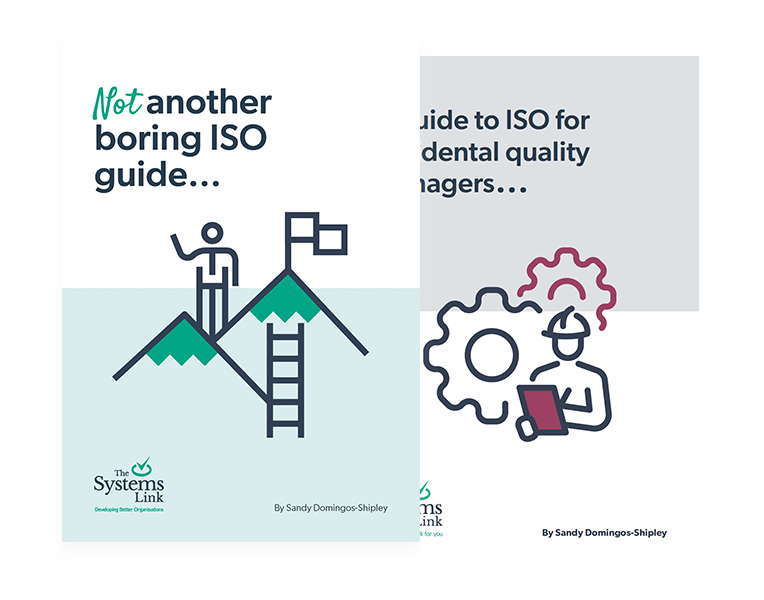If you’re considering ISO certification but feel overwhelmed by the potential cost or work involved, you’re not alone. If you’ve never been through the process, it’s difficult to know what to expect. And what happens if you start the process, and it turns out to be way more complicated and expensive than you anticipated?
That’s why I recommend starting with a gap analysis. It helps you understand what your ISO journey would involve. Are there big gaps in your processes, or do you just need a few minor improvements?
Once we’ve conducted a gap analysis, you can decide whether you’re ready to move forward with ISO immediately or whether you need to make some operational changes first.
But a gap analysis isn’t just about ISO. A gap analysis is like a Polaroid picture – it gives you an instant snapshot of what things look like in your business right now, which can benefit you in many ways.
1. Improve efficiency
Too many companies have inefficient processes or systems that don’t serve any purpose – this is almost as bad as having no processes at all. If a process doesn’t improve operational performance or provide a better customer experience, what’s the point? If there are inadequate or overcomplicated systems or processes, employees will become frustrated and start to cut corners.
A gap analysis helps you understand where the inefficiencies are so you can streamline workflows, allocate resources more effectively, and improve productivity.
2. Improve customer satisfaction
Customer satisfaction should be a priority for any business – it should be the foundation you build everything else on. If you can’t supply what your customers want to the standard they want, you’ll spend more time rectifying problems than growing your business.
Happy customers make repeat purchases, recommend you, and help you build a good reputation. A gap analysis will help you identify where improvements can be made to increase customer satisfaction, retention, and loyalty.
3. Ensure compliance
If you operate within a regulated industry, a gap analysis will help ensure compliance with industry standards, laws, and regulations. You’ll be able to see if you’re falling short anywhere and whether your procedures need tightening up.
But even if your industry isn’t regulated, there are still health and safety, consumer, and employment laws you need to adhere to. Even if you think you’ve got everything covered, it doesn’t hurt to be 100% sure.
4. Facilitate successful change
Too many companies rush into change without considering the big picture. Even adding a new product to your range can have a significant impact – an increase in orders might put a strain on your sales or fulfilment team.
Whether you are creating a new role, upgrading all the IT equipment, or introducing a new product range, you need to plan how to do that effectively. A gap analysis gives you an accurate picture of where you are now, so you can successfully get to where you want to be.
5. Identify opportunities and threats
A gap analysis will help you make more informed business decisions around investment and growth. You don’t need to make guesses about what is causing issues or where you need to make changes – you can use real data.
You’ll have a clear picture of where your business is, what risks and threats you might face, how to capitalise on new opportunities, and the true cause of any recurring or ongoing problems.
What does a gap analysis involve?
When I carry out a gap analysis, I use the ISO frameworks as a guide because the ISO framework is about far more than just getting certified.
ISO 9001 is literally the international standard for quality – the blueprint for building a world-class business. And even if you aren’t interested in ISO accreditation, having world-class systems will be hugely beneficial, so it makes sense to follow that blueprint.
And so many businesses already have more of the systems and processes in place than they realise – usually around 50-60%. By conducting a mock audit, I help you understand how to align what you already have with what the standard recommends.
If you are considering ISO certification, a gap analysis will give you an exact outline of what will be involved. I’ll show you areas in your business where there is a complete gap and where there is a partial gap that can be easily addressed.
I’ll also assist you in putting together a plan. We’ll look at what can be managed internally, what you’ll need additional support with, and who will be responsible for what. This will help you manage the costs and process more effectively.
Whether you’re considering ISO accreditation, are planning a change in your business, or simply want to understand how to improve operational performance, a gap analysis is a fantastic starting point.
If you’d like to book your gap analysis or would like to find out more about how it can benefit your business, give me a call on 0113 418 2579 or email info@thesystemslink.co.uk.


